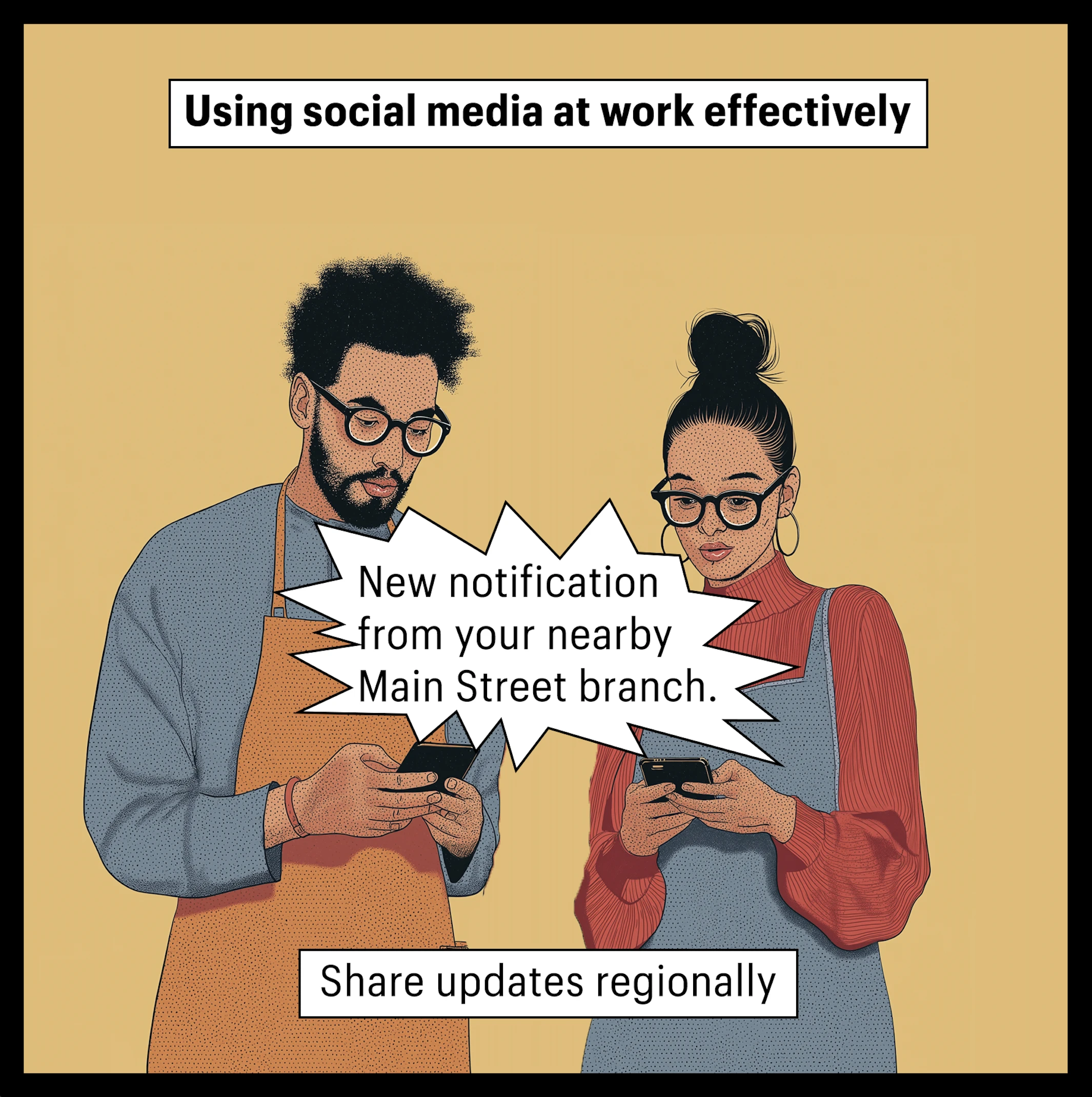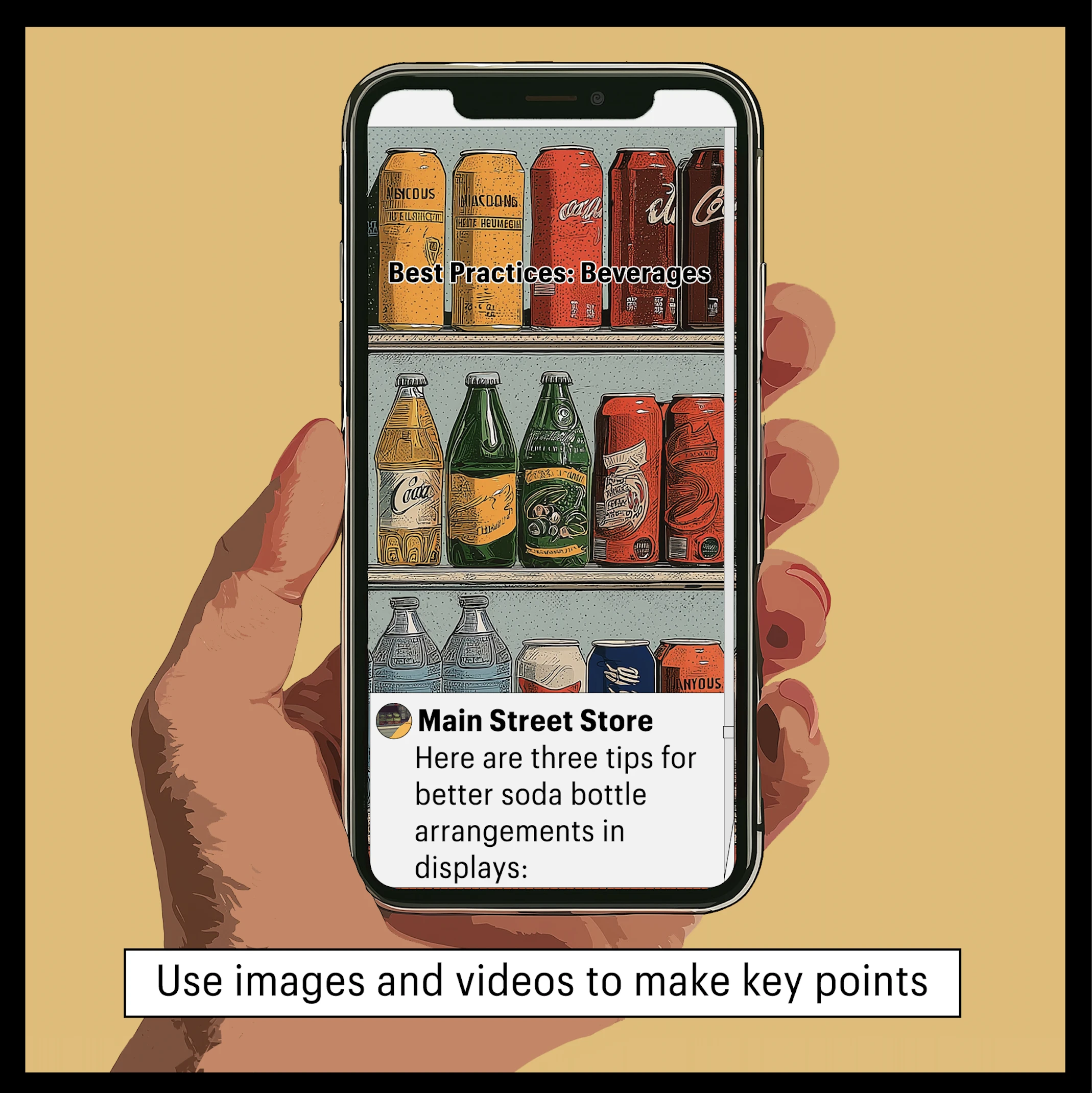Work-based social media risks drowning employees in birthday wishes and pet photos, much like personal Facebook accounts can overwhelm users with ads, groups, and other clutter.
But a new analysis of a large European grocery chain shows how carefully curated posts from high-performing units can boost sales and encourage others to share their ideas. Retailers exposed to posts featuring real success stories through employee-only enterprise social media networks increased their sales growth more steadily over time than peer locations where the same platform did not feature such curated posts, according to “The Effect of a System for Sharing Best Practices Within Pre-existing Peer Networks.”
In addition to increasing sales, exchanging best practices in a structured format on social media reduced information overload and encouraged more employees to share their insights without fear of losing their competitive edge. It isn’t about posting more content: The impact comes from highlighting proven ideas from high performers in curated posts with a consistent structure, tone, and format. The structured approach helps employees identify what matters and take action.
“In an enterprise social network, great insights from high-performing employees can easily get lost in the noise,” says Tatiana Sandino, the Arthur Lowes Dickinson Professor of Business Administration at Harvard Business School and one of the study’s authors. “Without a clear structure, it’s hard for readers to tell a good idea from a bad idea. By creating a structure, management can legitimize ideas, making them more accessible and easier to act on.”
Now that Slack and Microsoft Teams have become the key channels for employee connection, many companies are considering how they might leverage these platforms to further their business aims. Sandino says that sharing best practices is a form of “structured empowerment” that can give companies an advantage, particularly helping employees in remote locations who have limited exposure to their peers’ work.
Sandino conducted the research, forthcoming in Management Science, with Shelley Xin Li, assistant professor of accounting at the University of Southern California.
Building scale through shared wisdom
Sandino has been studying how companies scale without losing their entrepreneurial spirit for more than two decades. In particular, she has probed the benefits of structured empowerment—the idea that organizations can support empowered employees by presenting them with different curated ways to do their work—while holding them accountable for outcomes.
This is important, she says, because “when companies scale without sharing best practices or standards, it becomes very difficult to coordinate the work. People end up reinventing the wheel throughout the organization, which keeps the company from becoming more effective.”
The anatomy of a successful post
The posts in the study went beyond the typical social update. They not only described best practices, but included images and sometimes videos to demonstrate key points. The posts were pinned to the top of relevant employee news feeds, with new ones developed every two weeks.
Posts were distributed to employees in regional groupings using an employee-only social media network similar to Facebook and were grouped by product category. Most posts aimed to help users understand the thinking behind highly appealing product displays and how they performed. Other posts emphasized the importance of accounting for local preferences and offered recommendations for improving product handling.
For example, one sample post highlighted “best practices on beverages,” and included a photo of a well-organized drink aisle and noted the importance of filling shelves.
“Nothing is as ugly as a poor soda department and likewise nothing is as fantastic as a well filled-up soda department either,” the post read in part.
Nearly 600 stores across 11 regions
To test the impact of structured knowledge sharing, Sandino and Li worked with 587 stores across 11 regions in a field experiment. Their team showed two social media posts a month to employees in 274 stores across five of the chain’s regions. The remaining stores and regions didn’t see any posts.
After 18 weeks, sales at stores that received the structured posts were 3.7 percent higher than those of stores that didn’t—a performance gap that grew steadily during the period. The researchers suggest that because the benefits gather momentum over time, the gains could compound if the system continues.
The best-practice posts generated measurable engagement, receiving 6 times as many comments as a standard post. Meaningful knowledge also reached employees typically overwhelmed by the amount of information shared on the employee social network. In stores with high levels of information overload, sales were over 5 percent higher at the end of the study than at comparable stores in the control group.
Helping colleagues, not competing with them
The system also encouraged more sharing among employees. Stores in the treatment group saw a 0.9 percentage point increase in posts to regional groups compared to the control stores.
That was a surprising and encouraging outcome. In a prior study by Sandino and Li, evidence suggested that employees were sometimes reluctant to share their best practices. That study also involved a retailer.
Some of the people in the study “decided not to share their best work,” she says, as they feared colleagues at other stores—those who served some of the same customers—might use the ideas to steal business. However, the current study didn’t reveal any underlying competition among employees.
“There are a couple likely reasons for this,” Sandino says. “One is that the structured format gives employees a clear model for how to share best practices. Another is that the visibility and recognition that come from these curated posts motivate people to share their best ideas.”
A well-designed system for sharing best practices, Sandino explains, can make employees feel more connected, especially among geographically dispersed teams, and help new hires gain skills faster. But the true value of sharing best practices, she says, emerges in organizations that empower employees to make decisions rather than follow rigid procedures.
“If you’re already telling employees exactly what to do, there’s no need to share alternative practices,” she says. “Curated practices are for empowered people looking for better ways to do their work. You’re giving them useful ideas, but still trusting them to judge what works best.”
Communicating best practices with AI?
Sandino says that artificial intelligence could provide new capabilities for sharing real-time knowledge. At a simple level, organizations could train a chatbot using a collection of practices and associated outcomes. Employees motivated to learn or solve problems could query the chatbot to find advice and resources.
AI could also play a broader role—analyzing data and observations on employee performance or customer experience to surface breakthrough solutions worth sharing with the organization.
For instance, Sandino and her colleague are currently studying how AI can analyze video footage to determine “where customers are getting stuck in their journey,” she says. “AI has great potential to collect information that could be used to uncover insights from high performers, helping organizations identify and share effective practices.”
Image by Ariana Cohen-Halberstam with asset from AdobeStock.





